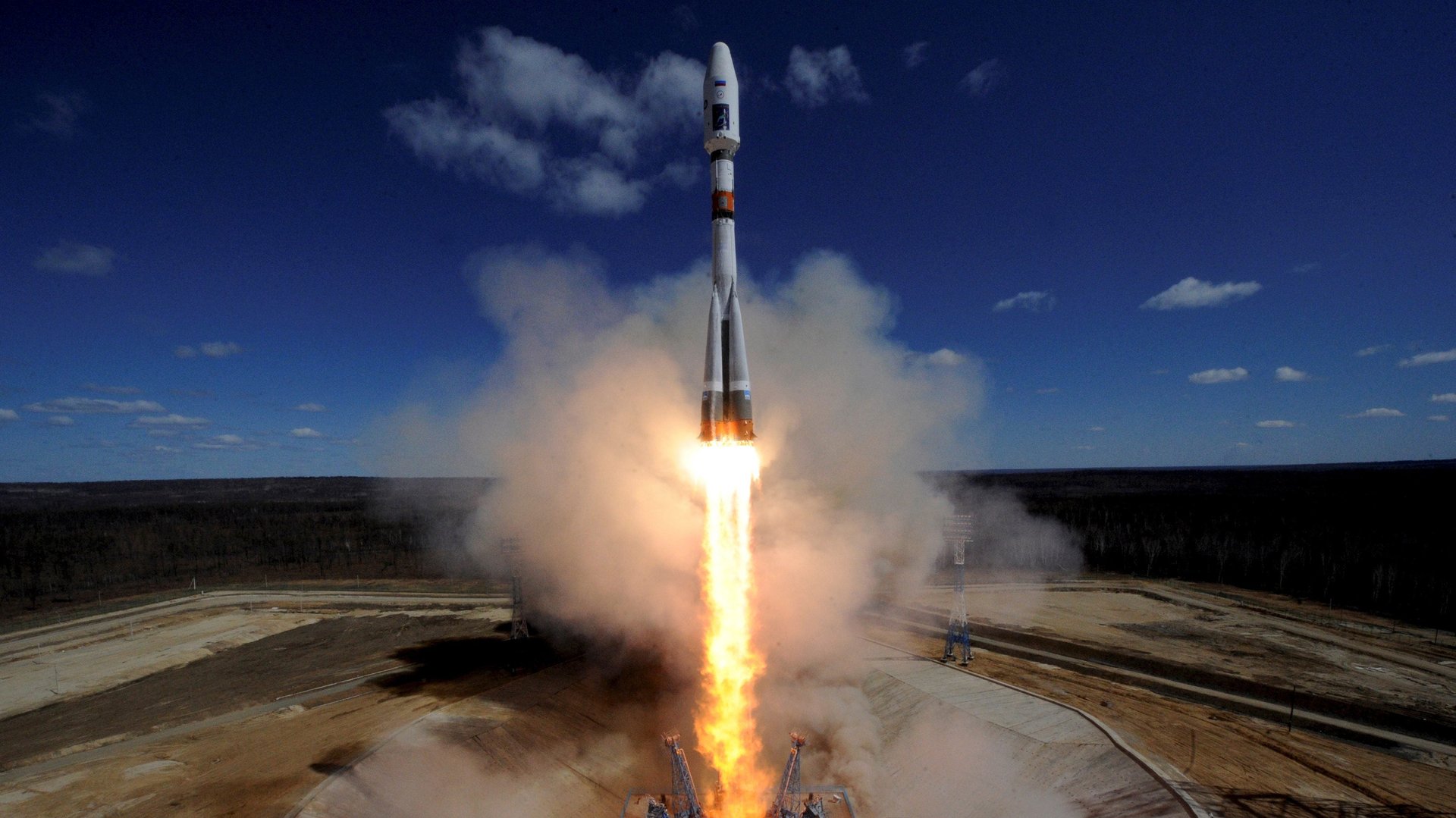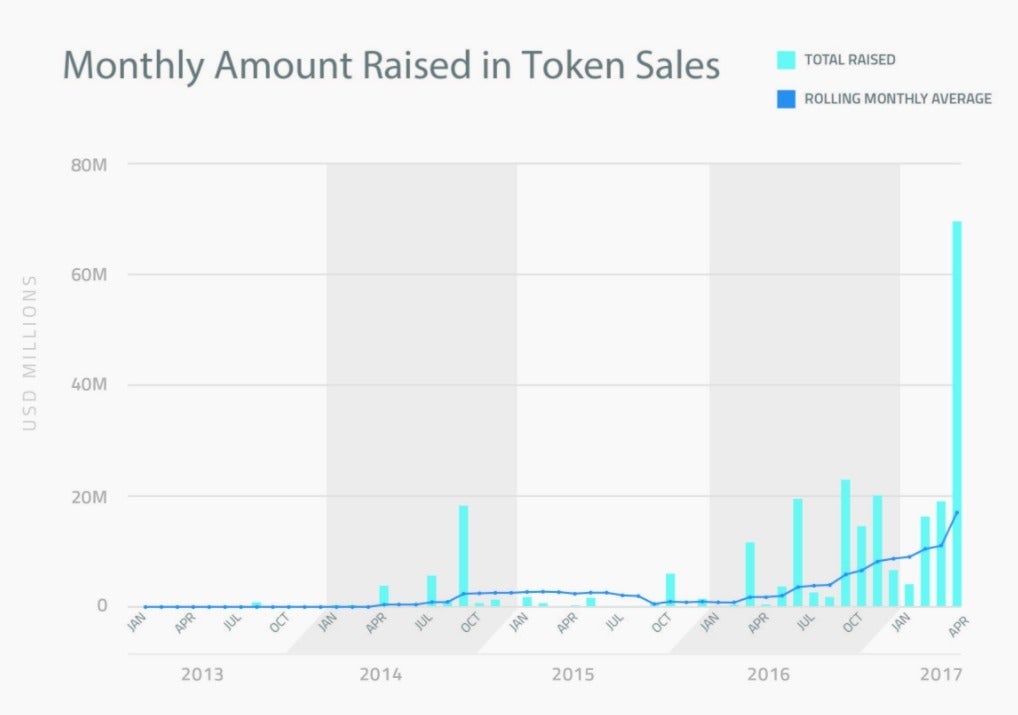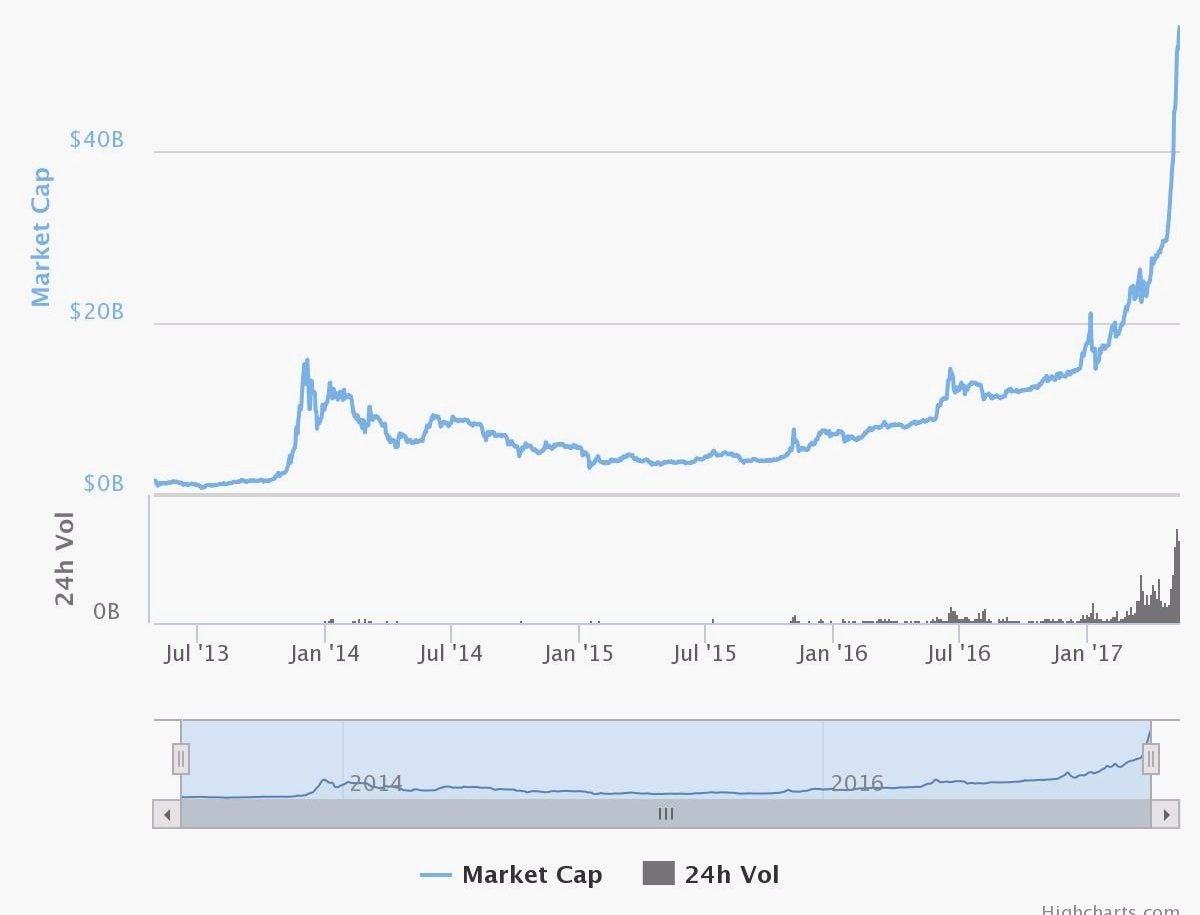The strange mix of reasons why bitcoin has soared to all-time records
Bitcoins traded at over $1,800 late last week, marking a new all-time high. To understand how significant this is, even in the volatile bitcoin market, the cryptocurrency’s previous record price of $1,165 took three years to topple, which happened in February this year when bitcoin traded at $1,210. That milestone has now been crushed just two months later. What’s going on?


Bitcoins traded at over $1,800 late last week, marking a new all-time high. To understand how significant this is, even in the volatile bitcoin market, the cryptocurrency’s previous record price of $1,165 took three years to topple, which happened in February this year when bitcoin traded at $1,210. That milestone has now been crushed just two months later. What’s going on?
All markets have their own complexities and odd wrinkles, but bitcoin has a special array of oddities. I spoke to a range of institutional traders, exchange owners, and informed observers of the bitcoin markets. This is the picture that emerged. It connects the dots between (are you ready?): bitcoin’s civil war; Wells Fargo and a Taiwanese banking freeze; an obscure cryptotoken known as Tether; Japanese payments regulations; an explosion of interest in the usually anemic market for altcoins; and the phenomenon known as the initial coin offering (ICO), which is being touted as a mechanism to upend traditional venture capital raising. Here goes nothing:
1. Bitcoin’s “civil war” reached its zenith in March, as developers threatened lawsuits and other action in the ongoing conflict over how to upgrade the bitcoin software so it can handle more transactions. The possibility that the cryptocurrency would ”fork,” or split in two, loomed. Investors started getting jittery and began looking to diversify their crypto holdings. Paradoxically, this will trigger the current bull run. Bitcoin price: 📉
2. The preferred vehicle for diversification was ethereum, the second most valuable cryptocurrency on the market. It’s seen as bitcoin’s successor in some ways, offering more powerful computational features like smart contracts. Besides, it survived one hard fork already last July, the first of several. Ethereum volumes and prices began to climb in March. Bitcoin price: 📉 Ethereum price: 📈
3. In April, one of the world’s biggest bitcoin exchanges, Bitfinex, announced problems wiring money to and from customers. It said the Taiwanese banks it used were blocking the transfers at the behest of Wells Fargo, which the banks used to move money further afield. Bitfinex sued Wells Fargo over the freeze. This coincided with Taiwan stepping up its anti-money-laundering oversight, putting high-risk bitcoin exchanges in compliance officers’ sights. Several other businesses reported problems with banking around the same time. There is an important psychological dimension to this: in the bitcoin world, when an exchange starts having trouble getting people their money, flashes of the 2014 collapse of Mt. Gox, when $350 million in bitcoin vanished, come to mind. The Bitfinex news spooked the bitcoin market further. Bitcoin price: 📉
4. Coincidentally, a rash of new tokens—available through so-called ICOs—caught the market’s attention. April was the biggest month for ICO fundraising ever, according to research firm Smith + Crown, with about $70 million raised. Companies use these tokens to both raise funds, and provide some utility to their products once launched.
For example, one of the most successful ICOs has been Gnosis, which raised $12 million worth of ether in 15 minutes, giving it a $300 million valuation. It’s a decentralized prediction market that requires the use of its own tokens to make bets on everything from the price of bitcoin to the value of a piece of art. The proprietary tokens can also be traded on the free market—Gnosis tokens doubled in value when they were offered on exchanges. These ICOs are priced in cryptocurrency only, and it’s usually ethereum. So more money flowed out of bitcoin and into ethereum and ICOs. Bitcoin price: 📉

5. At this point, ethereum and altcoin prices are exploding. There’s unprecedented liquidity in the crypto-to-crypto markets, a big shift from earlier phases of crypto trading, where the largest currency pairs were between a coin, usually bitcoin, and a fiat currency. Historically this has meant bitcoin-US dollar trading, and bitcoin-yuan trading. Now, people were trading exclusively between cryptocurrencies. You can see this in the huge volumes at the exchange Poloniex, once a bit player because it didn’t offer any fiat currency pairs. It’s now the biggest exchange in the world, by volume, according to data site ExchangeWar. ”The bitcoin-to-altcoin trading pairs are making up significant volume on exchanges … you have people with a lot of bitcoin diversifying into other things,” says Arthur Hayes, who runs the derivatives platform BitMex in Hong Kong. Bitcoin price:📈
6. But the sharp rise in altcoin prices appear to have caught traders by surprise. Some traders are locking in gains, but to cash out of many altcoins, you have to sell them and buy bitcoin. This means demand for bitcoin rose as traders sold alts. “Making [10 times the returns] in four months isn’t sustainable … altcoiners are euphoric,” says Alistair Milne, who manages the Altana Digital Currency Fund, based in Monaco.
As traders cash out, bitcoin is now acting like the “reserve currency” of the cryptocurrency world. “Bitcoin is the central point of liquidity,” says Charles Hayter of data site CryptoCompare. “It has more tributaries in this whole delta system. People are moving in and out of the more risky cryptos, saying, ‘yes, let’s pull back into bitcoin’.” Bitcoin price: 📈

Put those events together, and you get an explanation for the surging altcoin and bitcoin prices. In addition, there are a few extra factors that help explain the price boost:
- Japan adopted legislation that recognized bitcoin as a commodity, paving the way for new financial products from big banks, like this interest-bearing bitcoin account.
- The Taiwanese banking troubles also distorted prices on Bitfinex, because users who wanted to get their money off the exchange had to buy bitcoin to cash out. This bid up the bitcoin price on Bitfinex, which is seen in the price premium there: bitcoin is about 7% more expensive there than on other exchanges.
- The Bitfinex issues also created a Taiwanese arbitrage play. One route out of Bitfinex was to buy bitcoin, move the coins to Poloniex, and buy a token called Tether there. Tethers were designed to be pegged to the US dollar, so each Tether is worth one dollar. But the peg crumbled in late April and Tethers started to trade at a discount to their face value on exchanges. However, those with Taiwanese bank accounts reported that they were able to redeem Tethers at face value, and extract fiat currency into their accounts. This created a lucrative arbitrage opportunity: buy Tethers at a discount, and redeem them at face value, earning seven or eight percentage points in the process.
- There’s also a technical reason to be bullish about bitcoin. Its closely related cousin, Litecoin, upgraded its transaction capacity with a soft fork last week. The upgrade—known as “segregated witness”—is the same solution being proposed by one camp in bitcoin’s civil war. The execution on litecoin gives bitcoiners confidence that it could work on the grand-daddy of crypto coins.
The sources I spoke to also broadly agreed on two things: The cryptomarkets are in a huge bubble, and they are waiting for it to pop. Also, Bitfinex may be having banking trouble for now, but it’s unlikely to go through a Mt. Gox-style meltdown.
So the next time someone asks you why the price of bitcoin is going crazy, you’ll have a plethora of answers ready for them.